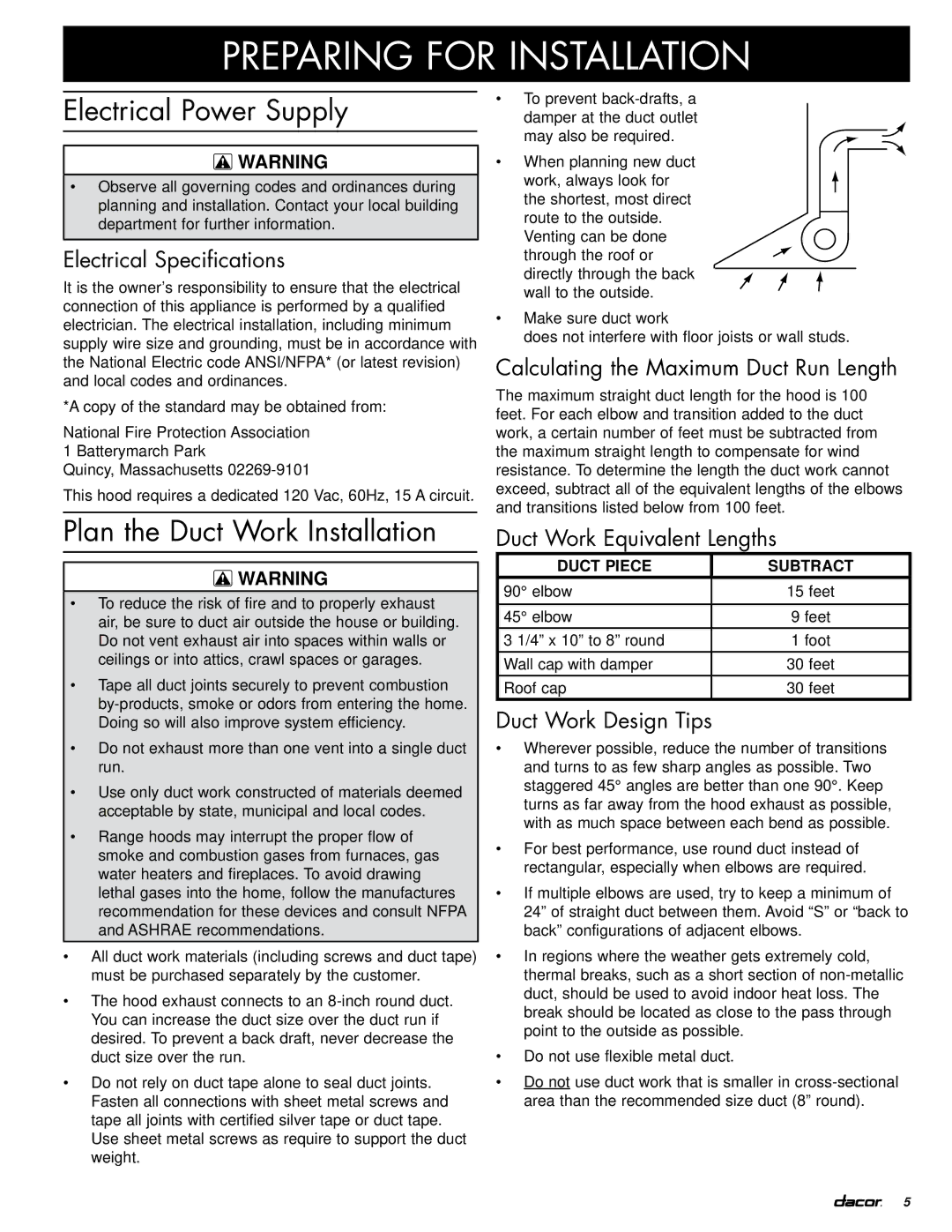PHW specifications
Dacor PHW, a standout in the realm of modern appliances, exemplifies sophistication and innovation in home cooking. Designed with the culinary enthusiast in mind, this high-performance wall oven is engineered to elevate the cooking experience and maximize culinary creativity.One of the most notable features of the Dacor PHW is its advanced heating technology. Utilizing a dual-fuel system, this wall oven combines the precision of electric cooking with the responsiveness of gas, allowing for a variety of cooking techniques. The electric oven provides consistent and even heat distribution, making it ideal for baking, while the gas burners deliver rapid and adjustable heat for sautéing and searing.
The Dacor PHW is equipped with a generous capacity, accommodating large meals and multiple dishes simultaneously. Its spacious interior allows for the use of multiple racks, optimizing space and flexibility when preparing meals for family gatherings or special events. Additionally, the oven features multiple cooking modes, including convection baking, roasting, broiling, and proofing, catering to various culinary requirements.
The design of the Dacor PHW is equally impressive. With its sleek stainless steel finish and clean lines, it seamlessly integrates into any modern kitchen aesthetic. The intuitive touchscreen interface provides easy access to settings and cooking functions, while the Wi-Fi connectivity allows users to control the oven remotely via a mobile app. This feature not only enhances convenience but also allows for monitoring cooking progress from anywhere in the home.
Another hallmark of the Dacor PHW is its focus on safety and efficiency. The oven includes advanced temperature control technology to ensure precise cooking results, while the self-cleaning option simplifies maintenance. With its eco-friendly design, the Dacor PHW consumes less energy without compromising performance.
In conclusion, the Dacor PHW represents the pinnacle of innovation in kitchen appliances, integrating functionality, cutting-edge technology, and elegant design. Whether you're an amateur cook or a seasoned chef, the Dacor PHW is engineered to inspire culinary excellence and make cooking a more enjoyable experience. Its combination of features makes it a valuable addition to any modern kitchen, setting a new standard for wall ovens in the industry.

